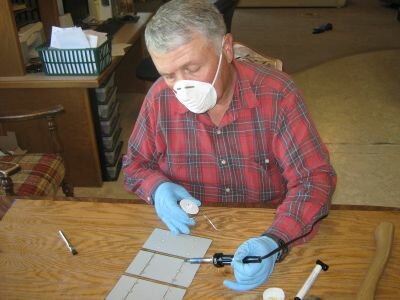
1) Before you begin building the solar power system, do a home energy audit.
You have to know how much power your household is using and where electricity is being consumed. After the energy audit, you can then decide on what type of system and how big your home solar setup should be.
Some states require a full energy audit before you can install a [tag-tec]residential solar system[/tag-tec]. For example, California is making this a requirement if you want to collect their sizable rebate.
2) Decide how much capital you want to invest in the system and work out a financing program.
A home solar system can be quite expensive. Most home owners will have to get a loan to finance this type of home improvement project. Start talking to your bankers.
3) Start sourcing for solar contractors or solar professional.
Talk to people that have built a home solar system and get their advice. Read trade journals or visit forum on the web for information. You want to get recommendation on solar contractors.
Call each recommended builders, tell them your requirement or get them to come to your house for a closer evaluation. Finally, ask for formal project quotations.
4) Evaluate the bids, interview the contractors and select the builder you want to work with.
Sign the contract and give them the project down payment.
5) Instruct the solar contractor to start buying solar components and parts.
Major components such as solar modules, charge controller, battery bank, power inverter etc are rarely in stock. Wait a couple of days for the goods to arrive. In the mean time, the contractor can start the preliminary construction work.
This is also the time when you (or the contractor) start looking into approvals for building permits, subsidies and tax breaks.
6) When all the solar components have arrived, begin the installation process.
Be sure to check all the equipment to make sure they are in working order. When the job is done, arrange for inspections by the county and utility company.
7) If you are using a solar intertie system, wait for the utility company to install in a new meter and connect your residential solar power system to the grid.
This part can only be done by a qualified and certified technician from the power company.
8) Start reading all the tutorials and manuals of the solar system.
Learn how the gauges work. Make sure you keep all the solar components warranty cards.
9) Preparing the paperwork.
Submit any paperwork of your home solar installation to the utility company, states etc for final rebate payments.
10) Start changing how your family uses energy to optimize your Return On Investment (ROI).
For example, reduce your household power consumption at night when the solar modules are not generating power.
11) Maintain and repair the solar system.
Work out a system maintenance schedule with your solar contractor. Even thought the system has not many moving parts, the solar modules have to be cleaned regularly for optimum performance.
12) Finally, start expanding your home solar system by adding more solar modules.
It will be a matter of time before all your home electrical appliances are powered by solar energy.
Home Solar And Wind Power Videos
Do you want to know how you can use solar modules or wind generator to reduce your home energy consumption? If you do, check out the 30 solar and wind power for home videos e-book we’ve compiled. It’s free to download.